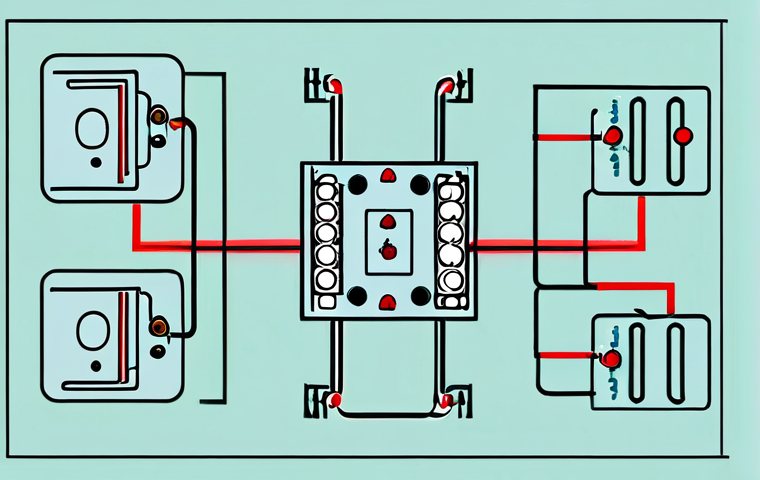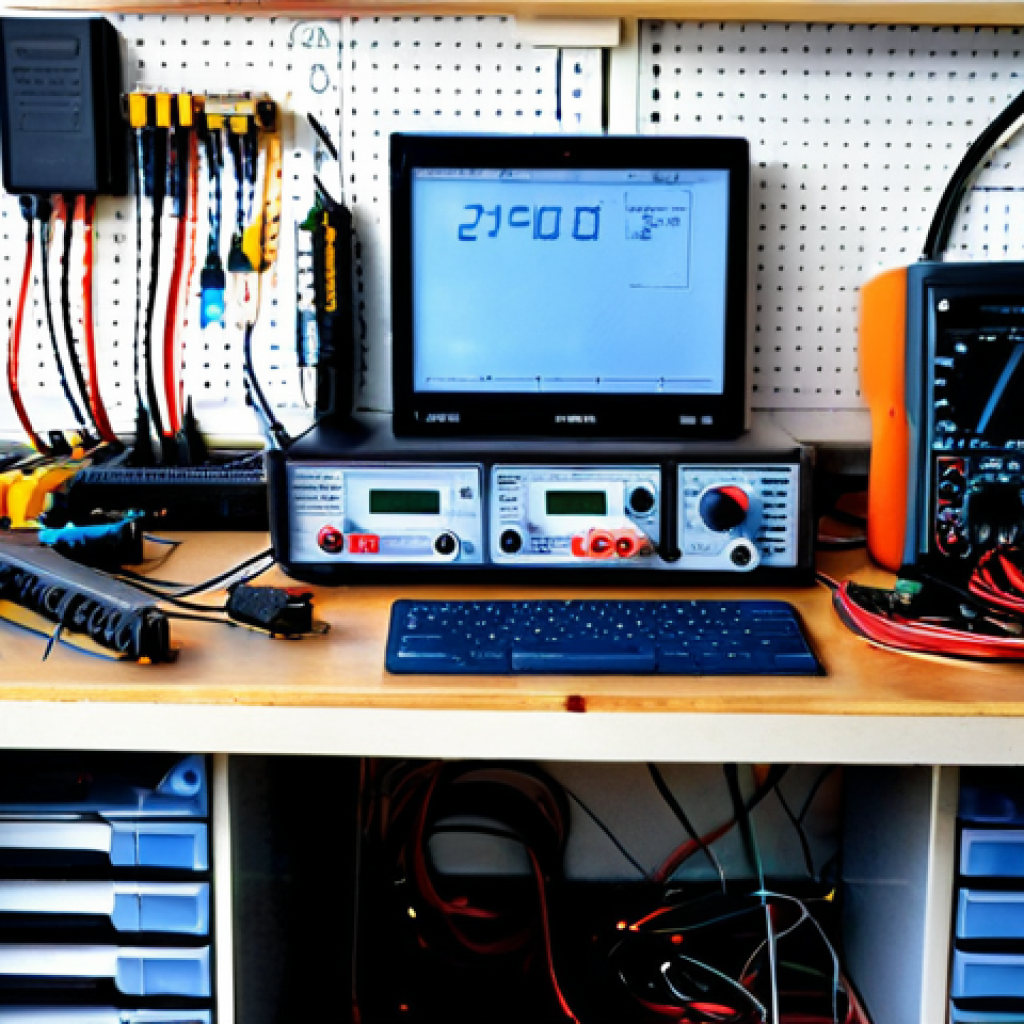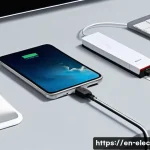Ever tinkered with a flashlight and wondered why it works? Or maybe you’ve glanced at a circuit board inside your computer and felt a wave of curiosity?
That, my friend, is the beginning of understanding electrical circuit theory! It’s the foundation of so much modern technology, from the smartphones we carry to the massive power grids that light up our cities.
It’s a beautiful blend of physics and math that explains how electricity flows and how we can control it. Think of it like the plumbing of the electronic world – understanding the pipes and valves allows you to design and fix anything.
Let’s dive in and learn more about it in the following article.
Alright, let’s get this blog post cooking!
Delving into the Actors on the Electrical Stage: Voltage, Current, and Resistance

Think of electricity like a bustling city. You’ve got the power plants (voltage), the traffic (current), and the roadblocks (resistance). Understanding these three amigos is crucial to grasping how any circuit works.
1. Voltage: The Driving Force
Voltage, often described as electrical potential difference, is like the pressure that pushes electricity through a circuit. Imagine a water tank perched high above your house.
The higher the tank, the more pressure it exerts on the water flowing through your pipes. Similarly, higher voltage means a stronger “push” on the electrons, leading to a greater flow of current.
I remember when I was first learning about this, I mistakenly thought higher voltage always meant a “stronger” circuit, but that’s not always true! It’s all about the balance with resistance and current.
We measure it in Volts (V), named after Alessandro Volta, the inventor of the first electrical battery.
2. Current: The Electrical Traffic
Current is the rate at which electrical charge flows through a circuit. Think of it as the number of cars speeding down a highway. A higher current means more electrons are moving through the circuit at any given time.
This is what actually powers our devices. You know how sometimes you overload a circuit in your house by plugging in too many things? That’s because you’re drawing too much current, exceeding the circuit’s capacity.
It’s measured in Amperes (A), often shortened to Amps, named after André-Marie Ampère, a pioneer in electromagnetism. I once blew a fuse in my old apartment by trying to run a space heater and a microwave at the same time – definitely learned my lesson about current limits that day!
3. Resistance: The Roadblock to Electrical Flow
Resistance opposes the flow of current in a circuit. It’s like friction in a mechanical system or the diameter of a pipe restricting water flow. A higher resistance means it’s harder for the current to flow.
This isn’t necessarily a bad thing! Resistors are used in circuits to control current, divide voltage, and much more. Imagine a dimmer switch on a light – it works by changing the resistance in the circuit, thus controlling the current flowing to the lightbulb.
Resistance is measured in Ohms (Ω), named after Georg Ohm, who discovered the relationship between voltage, current, and resistance, which we now know as Ohm’s Law.
Cracking the Code: Ohm’s Law in Action
Ohm’s Law is the fundamental equation that governs the relationship between voltage (V), current (I), and resistance (R) in an electrical circuit. It states: V = I * R.
This simple equation is incredibly powerful and allows you to calculate any one of these values if you know the other two.
1. Putting the Formula to Work
Let’s say you have a circuit with a 12V battery and a resistor of 6 Ohms. Using Ohm’s Law, you can calculate the current flowing through the circuit: I = V / R = 12V / 6Ω = 2A.
This means that 2 Amps of current are flowing through the circuit. Conversely, if you know the current is 2A and the resistance is 6 Ohms, you can calculate the voltage: V = 2A * 6Ω = 12V.
2. Practical Applications of Ohm’s Law
Ohm’s Law is used in countless applications, from designing electronic circuits to troubleshooting problems. For instance, if a lightbulb in your house isn’t working, you can use Ohm’s Law to determine if the problem is a low voltage supply or a faulty resistor within the bulb.
Technicians use Ohm’s Law to diagnose issues in car electrical systems, ensuring that everything from the headlights to the engine control unit is functioning correctly.
I remember helping a friend fix his car’s turn signals using Ohm’s Law. We measured the resistance and voltage and were able to pinpoint a bad connection that was limiting the current flow.
Series vs. Parallel: Understanding Circuit Configurations
Circuits can be wired in different ways, the two most common configurations being series and parallel. Each arrangement has its own characteristics and affects how voltage, current, and resistance behave in the circuit.
Understanding these differences is crucial for designing efficient and safe electrical systems.
1. Series Circuits: A Single Path
In a series circuit, components are connected end-to-end along a single path. This means that the current flowing through each component is the same. However, the voltage is divided across each component.
Think of it like a single lane road: all the cars (current) have to pass through each point, but the speed (voltage) might vary depending on the road conditions.
If one component in a series circuit fails, the entire circuit breaks, and no current flows. This is because there’s only one path for the current to take.
2. Parallel Circuits: Multiple Paths
In a parallel circuit, components are connected along multiple paths. This means that the voltage across each component is the same. However, the current is divided among each path.
Think of it like a multi-lane highway: cars (current) can choose different routes, but the speed limit (voltage) is the same across all lanes. If one component in a parallel circuit fails, the other components continue to function because the current can still flow through the other paths.
This is why homes are typically wired in parallel – so one broken appliance won’t shut down your entire house.
Power Up: Understanding Electrical Power
Electrical power is the rate at which electrical energy is transferred in a circuit. It tells us how much energy a device consumes or produces per unit of time.
Understanding power is crucial for designing energy-efficient systems and preventing overloads.
1. The Power Equation

Power (P) is calculated using the equation: P = V * I, where V is the voltage and I is the current. This equation tells us that power is directly proportional to both voltage and current.
If you double the voltage or the current, you double the power. Power is measured in Watts (W), named after James Watt, the inventor of the steam engine.
One Watt is defined as one Joule of energy per second.
2. Practical Applications of Power Calculations
Power calculations are essential for determining the energy consumption of devices. For example, a 100W lightbulb consumes 100 Joules of energy per second.
This information allows you to calculate the cost of running the lightbulb for a certain period of time. Power calculations are also used to ensure that circuits are not overloaded.
If the total power consumed by all devices in a circuit exceeds the circuit’s capacity, it can lead to overheating and potentially a fire. I always double-check the power ratings of appliances before plugging them into the same outlet to avoid overloading the circuit.
Essential Tools and Techniques for Circuit Analysis
Analyzing electrical circuits often requires the use of specialized tools and techniques. These tools help you measure voltage, current, and resistance, and they enable you to troubleshoot problems and verify designs.
1. The Multimeter: Your Best Friend
A multimeter is a versatile instrument that can measure voltage, current, resistance, and other electrical parameters. It’s an essential tool for anyone working with electrical circuits.
A multimeter typically has a selector switch that allows you to choose the parameter you want to measure and a set of probes that you connect to the circuit.
When measuring voltage, the multimeter is connected in parallel with the component you want to measure. When measuring current, the multimeter is connected in series with the circuit.
2. Breadboards: The Prototyping Playground
A breadboard is a solderless prototyping tool that allows you to build and test circuits without the need for soldering. It consists of a grid of holes that are interconnected in a specific pattern.
Components can be easily inserted into the holes, and wires can be used to connect them. Breadboards are ideal for experimenting with different circuit configurations and testing designs before building a permanent circuit.
I’ve spent countless hours tinkering with circuits on breadboards, trying out different ideas and learning from my mistakes. It’s a fantastic way to get hands-on experience with electronics.
Safety First: Protecting Yourself from Electrical Hazards
Working with electricity can be dangerous if proper safety precautions are not taken. Electrical shocks can cause serious injury or even death. It’s important to understand the risks and to follow safe practices when working with electrical circuits.
1. Insulate Yourself
Always make sure you are properly insulated from electrical sources. Wear rubber gloves and shoes with rubber soles to prevent electricity from flowing through your body.
Never work on live circuits unless absolutely necessary. If you must work on a live circuit, use insulated tools and take extra precautions to avoid contact with any exposed wires.
I once saw a friend get a nasty shock when he accidentally touched a live wire with a metal wrench – it was a valuable lesson in the importance of insulation.
2. Turn Off the Power
The most important safety precaution is to always turn off the power before working on any electrical circuit. Locate the circuit breaker or fuse that controls the circuit and turn it off.
Verify that the power is off by using a multimeter to check for voltage. Even after turning off the power, it’s a good idea to discharge any capacitors in the circuit.
Capacitors can store energy even after the power is turned off, and they can deliver a dangerous shock. I always make sure to double-check that the power is off before starting any electrical work – it’s just not worth the risk.
| Concept | Description | Unit |
|---|---|---|
| Voltage | Electrical potential difference | Volts (V) |
| Current | Rate of flow of electrical charge | Amperes (A) |
| Resistance | Opposition to current flow | Ohms (Ω) |
| Power | Rate of energy transfer | Watts (W) |
Alright, here’s the concluding section, the trivia, and the key takeaways, all in English!
In Closing
So, there you have it! Voltage, current, and resistance – the dynamic trio that makes our electrical world go ’round. Whether you’re tinkering with electronics as a hobby or working with circuits professionally, understanding these concepts and Ohm’s Law is absolutely essential. Keep experimenting, stay curious, and most importantly, stay safe! Now, go forth and electrify your knowledge!
Handy Trivia
1. Did you know that lightning can reach voltages of up to 300 million volts? Talk about a power surge!
2. The human body has a natural resistance to electricity, but it varies depending on skin moisture. That’s why you’re more likely to get shocked when your hands are wet!
3. A “short circuit” occurs when the resistance in a circuit drops to almost zero, causing a massive current flow. This is often what leads to blown fuses or tripped circuit breakers.
4. Superconductors are materials that have zero resistance to electrical current at very low temperatures. They’re used in advanced technologies like MRI machines and particle accelerators.
5. The first practical use of electricity was for telegraphs in the mid-19th century. These devices transmitted messages over long distances using electrical signals.
Key Takeaways
Understanding voltage, current, and resistance is fundamental to understanding electrical circuits.
Ohm’s Law (V = I * R) allows you to calculate any one of these values if you know the other two.
Series circuits have a single path for current, while parallel circuits have multiple paths.
Electrical power (P = V * I) tells us how much energy a device consumes or produces.
Always prioritize safety when working with electricity by insulating yourself and turning off the power.
Frequently Asked Questions (FAQ) 📖
Q: I’ve heard electrical circuit theory involves a lot of math. How scary is it really, and do I need to be a genius to understand it?
A: Look, math is definitely involved, but don’t let it scare you off! It’s more about understanding the concepts than being a whiz at calculus. Think of it like learning to drive: at first, all the pedals and signals seem overwhelming, but with a little practice, it becomes second nature.
The math is just a tool to describe how electricity behaves. I remember struggling with Ohm’s Law at first, but once I grasped the underlying idea of voltage, current, and resistance being related, it all clicked.
There are tons of online resources and practical examples that make it much easier to digest. You don’t need to be Einstein, just willing to put in a little effort.
Q: Okay, so I understand the basic idea, but where can I see electrical circuit theory in action in everyday life? I mean, beyond just knowing my phone works.
A: Everywhere! Honestly, once you start looking, you’ll see it. Dimmer switches controlling the brightness of lights?
That’s circuit theory adjusting resistance. The way your car’s electrical system manages everything from the headlights to the engine ignition? More circuit theory.
Even something as simple as a battery powering a remote control relies on the principles of circuits. I was tinkering with a faulty washing machine the other day, and understanding basic circuit concepts helped me trace the problem to a blown fuse.
Think about the smart thermostats in modern homes that optimize heating and cooling – algorithms combined with circuit designs making your life easier and save you money.
It’s honestly fascinating how much it underpins our world.
Q: What’s the best way to get started learning about electrical circuit theory?
A: re there any specific resources or tools you’d recommend for a beginner? A3: Definitely! Start with the basics.
YouTube has a ton of great introductory videos. Khan Academy’s electrical engineering section is fantastic too, breaking down complex topics into bite-sized lessons.
Then, get hands-on! Arduino kits are relatively cheap and let you build simple circuits and experiment with different components. That’s how I really got into it – making my own little LED circuits and then gradually tackling more complex projects.
Playing around with a circuit simulator like CircuitJS is also a great way to experiment without frying anything. Don’t be afraid to ask questions, either.
Online forums and communities are full of people willing to help. Just dive in and start exploring!
📚 References
Wikipedia Encyclopedia






